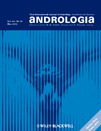Functional characterisation of a natural androgen receptor missense mutation (N771H) causing human androgen insensitivity syndrome
Summary
Androgen insensitivity syndrome (AIS) is an X-linked disorder due to mutations of androgen receptor (AR) gene. Various AR mutations have been identified, and the characterisation of these mutations greatly facilitates our understanding of AR structure–function. In this study, we have analysed an AR missense mutation (N771H) identified in patients with AIS. Functional analysis of the mutant AR was performed by in vitro mutagenesis–cotransfection assays. Compared to the wild-type AR, the dose–response curve of dihydrotestosterone-induced transactivation activity in the mutant AR was greatly shifted to the right and significantly decreased. However, the maximal efficacy of transactivation activity in the mutant AR was similar to that of the wild type. Receptor binding assay indicated that the mutant AR had an approximately 2.5-fold lower binding affinity to dihydrotestosterone compared to the wild type. Western blot analysis showed that the size and the expression level of mutant AR in transfected cells were comparable to the wild type. These data underscore the importance of asparagine at amino acid position 771 of human AR in normal ligand binding and normal receptor function, and a mutation at this position results in androgen insensitivity in affected subjects.




